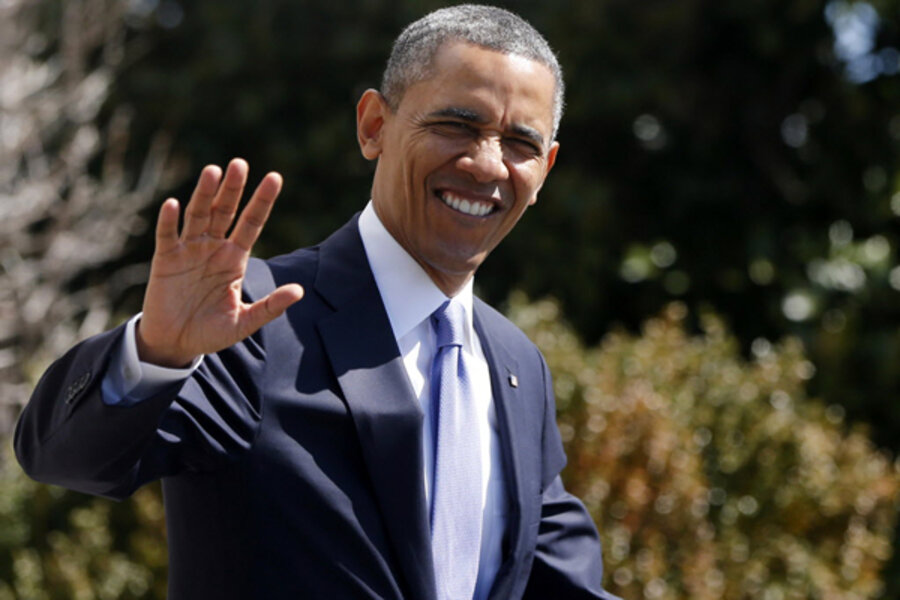Obama 5% of salary: He'll give it back, in sign of 'sequester' solidarity
Loading...
| Washington
President Obama has decided to return 5 percent of his salary to the Treasury as a tribute to federal workers facing furloughs under the "sequester," The New York Times reported Wednesday, citing an unnamed administration official.
Let’s see, the president makes $400,000 a year, and 5 percent of that is $20,000. After he leaves the White House in 2017, he can make up that money about five minutes into his first paid speech. So yes, when you’re president, and set for life financially, a $20,000 giveback to Uncle Sam really doesn’t cost you much of anything.
But it became increasingly clear that Mr. Obama had to do this. A bandwagon has been forming, and he had to jump on, especially as the day draws near when some federal workers begin to lose pay with forced days off.
On Tuesday, news broke that Defense Secretary Chuck Hagel and his deputy, Ashton Carter, pledged to return a portion of their salaries to the Treasury, commensurate with the pay that civilian Defense Department employees will lose because of furloughs. Several hundred thousand Pentagon employees are slated to lose 14 days of pay before Sept. 30, owing to the automatic spending cuts in the sequester.
Secretary Hagel and Deputy Secretary Carter are exempt from furloughs, because their positions require Senate confirmation.
On Monday, White House press secretary Jay Carney announced that furlough notices had gone out to 480 employees of the Office of Management and Budget, which is part of the Executive Office of the President (EOP). In addition, the EOP has reduced costs with hiring slowdowns, delayed back-filling of open positions, scaling back of equipment and supply purchases, curtailed staff travel, and reduced use of Internet air cards, Mr. Carney said.
Such moves at the White House and the broader EOP are similar to measures being taken across the federal government because of the sequester, he said.








